Ask Ethan: Is Light Fundamentally A Wave Or A Particle?

And can we devise an experiment to tell, even when we aren’t looking?
One of the most bizarre aspects of quantum physics is that the fundamental entities that make up the Universe, what we know as the indivisible quanta of reality, behave as both a wave and a particle. We can do certain experiments, like firing photons at a sheet of metal, where they act like particles, interacting with the electrons and kicking them off only if they individually have enough energy. Other experiments, like firing photons at small thin objects — whether slits, hairs, holes, spheres, or even DVDs — give patterned results that show exclusively wave-like behavior. What we observe appears to depend on which observations we make, which is frustrating, to say the least. Is there some way to tell, fundamentally, what the nature of a quanta is, and whether it’s wave-like or particle-like at its core? That’s what Sandra Marin wants to know, asking:
“I wonder if you could help me to understand John Wheeler — the delayed choice experiment and write an article about this.”
John Wheeler was one of the most brilliant minds in physics in the 20th century, responsible for enormous advances in quantum field theory, General Relativity, black holes, and even quantum computing. Yet the idea about the delayed choice experiment hearkens all the way back to perhaps our first experience with the wave-particle duality of quantum physics: the double-slit experiment.
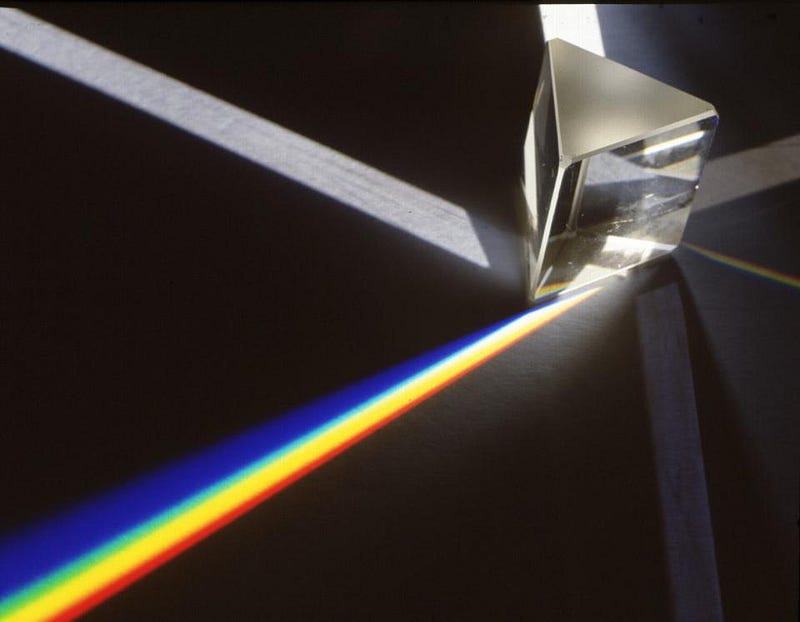
The idea of a double slit experiment goes way back to Christiaan Huygens, a prominent scientist in the 17th century who, in many ways, was a formidable rival to Isaac Newton. Newton insisted that light was a particle-like ray — a corpuscle, in his words — pointing to phenomena like the refraction of light through a crystal. Huygens, however, realized there were properties of light that were much better explained with waves, like interference and diffraction.
If you were to drop an object in a steady, still pool of water, for instance, you’d watch as it generated ripples that traveled outward: waves. If you set up a barrier to block the waves, but put a single, thin slit in the barrier, the waves would travel through that slit, making the same rippled pattern. If you placed two such slits close together, those rippled patterns would overlap, with the ripples adding up in some places and canceling out in others. We now know these phenomena as constructive and destructive interference. Huygens demonstrated that this is what occurred for water waves, and he strongly suspected that the same thing would occur for light waves.
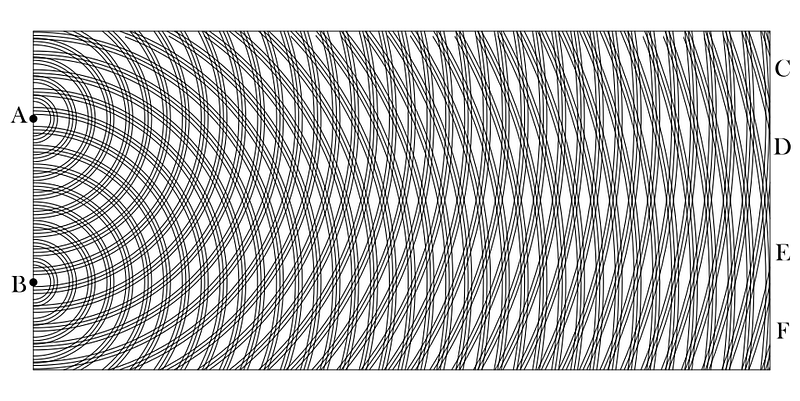
That key experiment was finally performed about 100 years later by Thomas Young, who managed to create light that was monochromatic enough to actually put the idea to the test. If you shine white light through a double slit, it comes in all different wavelengths, and so you can’t pick out constructive or destructive interference; all the different wavelengths overlap, producing a continuous band of white light. But with monochromatic light, not only did the interference pattern emerge, but it was directly related in an easily calculable way to the wavelength of the light chosen. (This experiment is much easier to do with modern day lasers, which provide not just monochromatic, but coherent light.)
Over time, the double slit experiment got more refined. It was shown to work for different colors and wavelengths. It works in vacuum as well as in media. It works for all quantum particles, including atoms and electrons, not just for photons. And it works even if you send the photons through one-at-a-time. The photons don’t just interfere with one another, but it behaves as though each individual photon somehow interferes with itself.
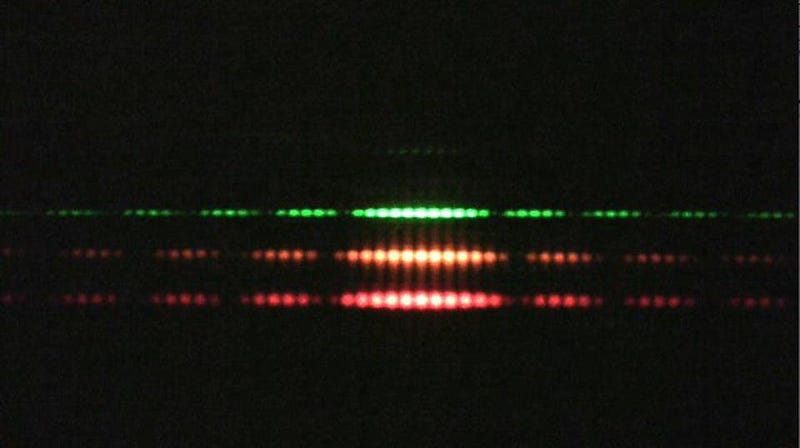
So, light’s a wave, right? Not so fast. There’s another modification you can make to the double slit experiment: you can try to measure which slit — slit #1 or slit #2 — the photons go through. You fire them one at a time, and you measure that the first photon goes through slit #2. You fire a second one, and measure that it went through slit #1. And you do this, just as you did before, for thousands upon thousands of photons, building up your pattern on the screen.
Guess what?
This time, unlike earlier, you don’t get an interference pattern anymore! Instead of having alternating regions where lots of photons accumulate interspersed with regions devoid of photons, you just get two lumps: one lump where the photons went straight through slit #1 and another where they went straight through slit #2. It’s almost as though the photon “knows” whether you’re watching it, behaving as a wave when you don’t and a particle when you do.

This is where the idea of Wheeler’s delayed-choice experiment came in. If the photon is going to behave differently whether you’re going to measure which slit it goes through, then there should be a way to figure out what the photon itself is doing. Is it somehow sensing the experimental apparatus? Does it adjust its behavior depending on how the experiment is set up? Does it rapidly transition from an indeterminate state into a determinate one, or does it remain indeterminate until you actually measure it?
These were the questions Wheeler was thinking about around 40 years ago, with the aim being to design an experiment (or multiple experiments) that would interrogate the photon under a variety of conditions. The key was going to be to subject the photon to a setup that would make it decide, “I am going to act like either a wave or a particle,” and then, before the photon reached the detector, create another change that would attempt to force the photon to behave in the opposite fashion. The goal was to catch the photon in a paradox: acting like a wave when it should’ve been acting like a particle, or vice versa.
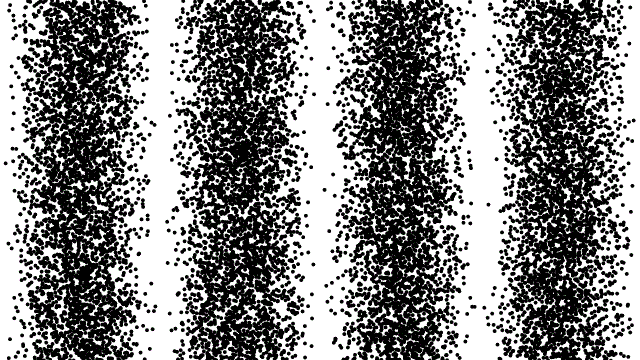
The motivation for these experiments may not be obvious, but you have to remember that there are many different interpretations for quantum physics that all fit the data at the time. Is there a real quantum wavefunction, and does it “collapse” when you make a measurement? Is there an infinite set of possible outcomes — an ensemble — and does measuring just let you know which path the Universe took? Are there an infinite slew of parallel Universes out there where every outcome occurs, and do we just occupy one such path?
We still don’t know. But what motivated Wheeler was the notion of “hidden variables.” Perhaps, the idea goes, the Universe really is deterministic, even at the quantum level. Perhaps in addition to the properties we can observe, there are properties that each quantum particle has that are unobservable to us, but that pre-determine what the outcome of any experiment is going to be. If only we managed to interrogate nature in the right way, perhaps we could even uncover what these hidden variables might be.
It was with this notion in mind that Wheeler devised these tests: to understand precisely “when” these photons made the transition from wave-like to particle-like, and vice versa.
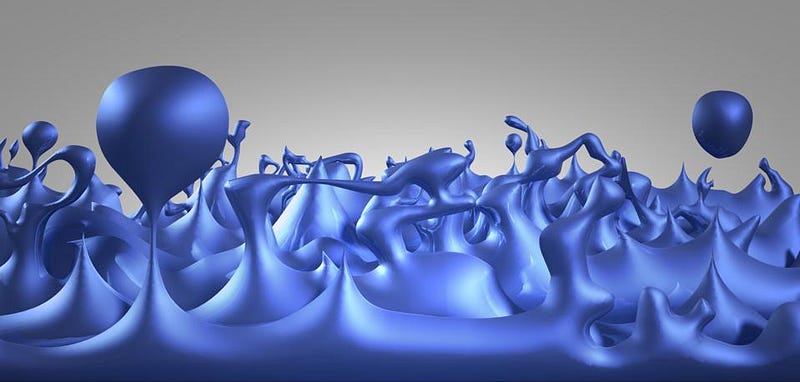
What you measure, of course, depends on what question you ask, as well as how you ask it. If you want to know, “where is this quantum of energy,” that’s a position measurement: an inherently particle-like property. Alternatively, you can ask, “what’s the frequency or the amplitude of this quantum,” and those are inherently wave-like properties. What you can’t do, though, is measure a particle-like and a wave-like property simultaneously.
Moreover, the only measurement we can ever make for a photon is inherently destructive to the photon; detecting a photon requires an interaction with another quanta, like an electron, which then produces a signal that can get recorded in some sort of detector. You can do whatever experiment you like for a single photon, and repeat that experiment as many times as you like, but the only information you can record is from the interaction of a photon with some sort of detector: a screen, a photomultiplier tube, an electron gate, etc.
Although Wheeler actually proposed many experiments to test this, my favorite is an interferometer that could be placed into two configurations: open and closed.
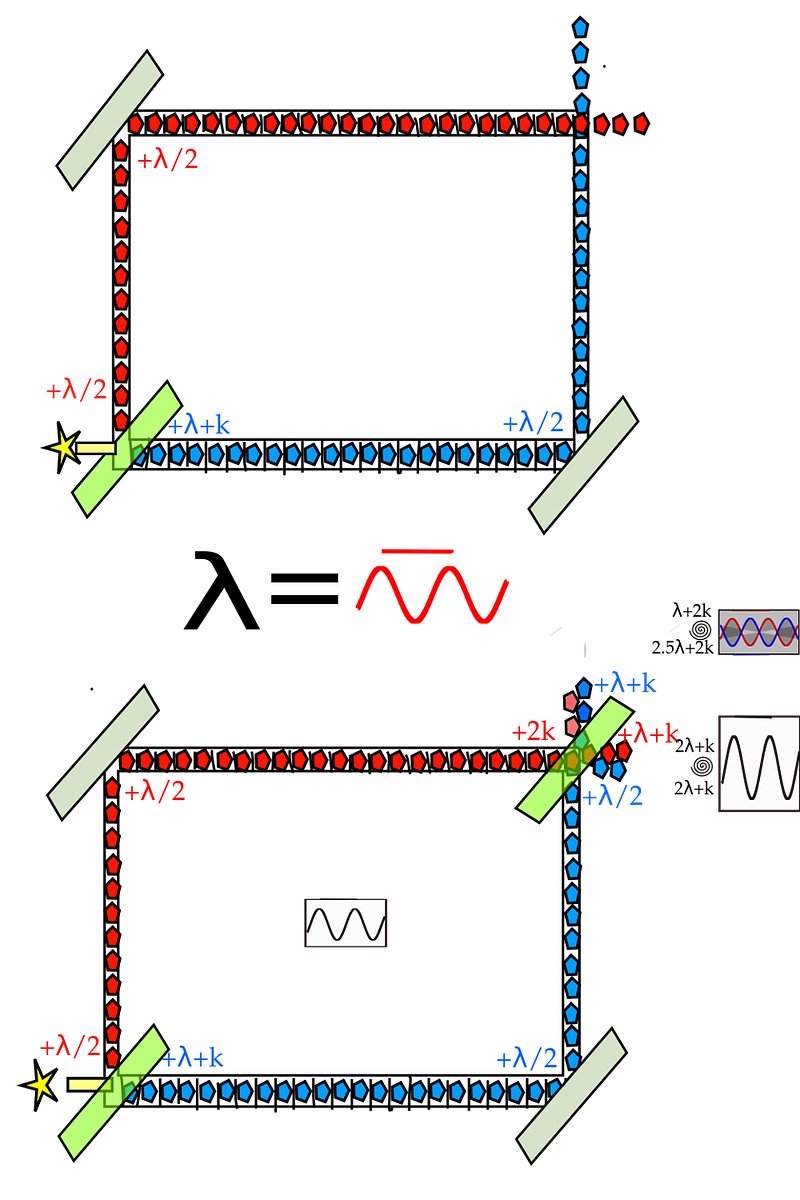
An interferometer works by sending two light paths in different directions, and then combining them at the end, producing an interference pattern dependent on the path length traversed by the photons. You can do it with even a single photon, initially passing it through a beam splitter, so 50% of the light follows the “blue” path, above, while the other 50% follows the “red” path. The light is then bounced off of mirrors, where either:
- you choose the open configuration (top, above), and you simply detect either a red-pathed photon or a blue-pathed photon, where it acts like a particle upon hitting the detectors,
- or you choose the closed configuration (bottom, below), where a second beam splitter recombines the light, where it acts like a wave on the screen.
In the open example, the photon takes one path or the other, only showing up in one detector. In the closed example, the photon must take both paths to interfere with itself. Wheeler realized that, if you passed the photon through the first beam splitter, you could then “swap” the second splitter, flipping it either open or closed as you like, to try to catch the photon in the act of being either a wave or a particle.
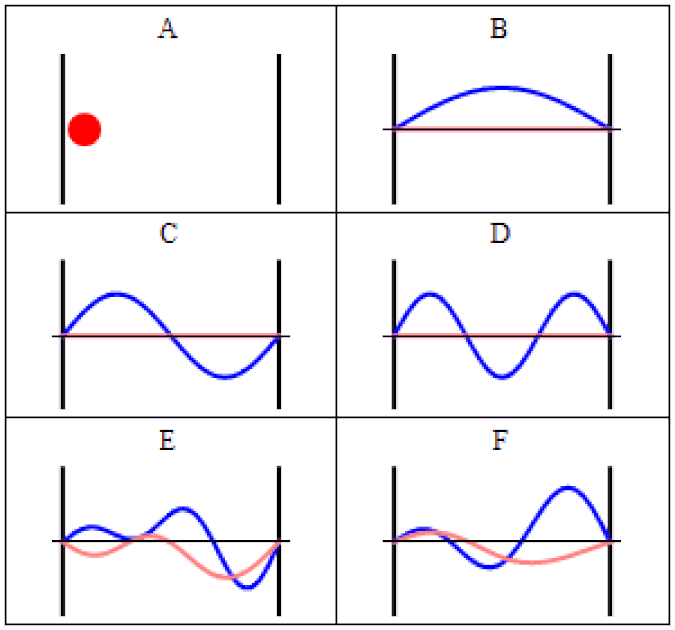
And yet, no matter how you do this experiment, you always get the same results. If, when the photon arrives at the location where the second splitter should be, the splitter is there (closed), you always get the wave pattern. If the second splitter isn’t there (open), you always get a particle arriving in one detector or the other. In other words, even if the photon was destined to travel the blue path, originally, showing up in one particular detector, the insertion of the second beam splitter, even at the last instant, always gives you the wave pattern back.
In other words, delaying your choice as to how you measure your quantum system, even up until the very last instant, no matter how long the quantum (be it a photon, electron, atom, or anything else) has been traveling on its journey, has no effect on the experimental outcome. Although Einstein definitively wanted us to have a completely comprehensible reality, where everything that occurred obeyed our notions of cause-and-effect without any retrocausality, it was his great rival Bohr who turned out to be correct on this point. In Bohr’s own words:
“…it…can make no difference, as regards observable effects obtainable by a definite experimental arrangement, whether our plans for constructing or handling the instruments are fixed beforehand or whether we prefer to postpone the completion of our planning until a later moment when the particle is already on its way from one instrument to another.”
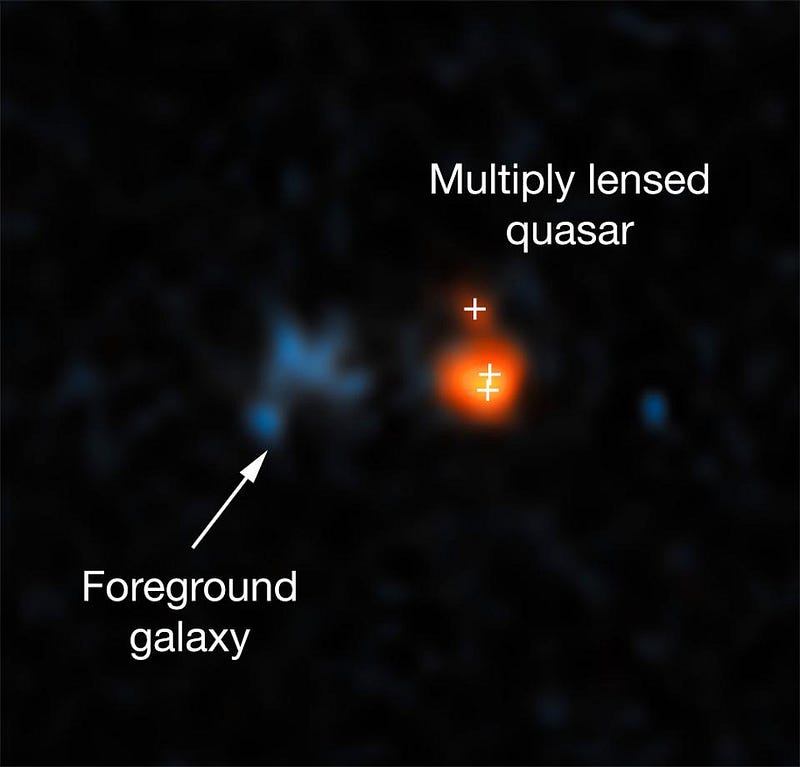
More recently, astronomers have used data from gravitational lenses, where multiple images of the same object arrive after journeying many millions or even billions of years across the Universe, to demonstrate the same thing. The arriving photons act as particles if you don’t recombine them in your detector, and act as waves if you do. Even though some of them left their source back when the most complex life form on Earth was a single-celled organism, we can swap one type of detector for another at the very last instant, implying that the photon was “always a wave” or “always a particle” in order to produce the result that we see.
What we’ve learned over the years, from these experiments and many others, is that all quanta inherently behave as thought they are both waves and particles simultaneously, with your choice of how you measure it determining the results you see. As far as we can tell, there is no one true objective, deterministic reality that exists independently of observers or interactions. In this Universe, you really to have to observe in order to find out what you get.
Send in your Ask Ethan questions to startswithabang at gmail dot com!
Starts With A Bang is written by Ethan Siegel, Ph.D., author of Beyond The Galaxy, and Treknology: The Science of Star Trek from Tricorders to Warp Drive.





